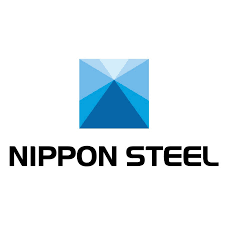〆Nippon Steel, JFE Shift to Electric Furnaces —Focusing on Ship Scrap:日鉄・JFE、電炉転換 船舶スクラップは造船カードに入るか

Nippon Steel and JFE Accelerate Shift to Electric Furnaces — Could Ship Scrap Enter the ‘Japan-US Golden Age of Shipbuilding’ Agenda?
日本製鉄・JFE、電炉転換を加速 船舶スクラップ、「日米造船黄金時代計画」のカードに入るか
Nippon Steel announced on May 30 that its plan to install electric arc furnaces (EAFs), which use electricity to melt iron, has been selected for government support. The total investment amounts to ¥868.7 billion, of which ¥251.4 billion will be covered by government subsidies.
JFE Steel, likewise, has committed ¥329.4 billion—including subsidies—to transition from traditional blast furnaces to EAFs, as steelmakers across Japan accelerate decarbonisation by converting their production processes.
In this context, iron scrap—particularly “ship scrap”—is increasingly recognised as the ideal feedstock for EAFs. The timing is notable: Japan and the United States are currently engaged in tariff-related negotiations and exploring a framework dubbed the “Japan-US Golden Age of Shipbuilding” initiative. As iron scrap is a key raw material for EAFs, it is also considered a critical resource in terms of both decarbonisation and supply chain stability.
While the primary aim of the “Golden Age” framework is to enhance bilateral cooperation in the shipbuilding sector, discussions on the specific role of ship scrap have yet to surface. Nevertheless, given that ship scrap sits at the intersection of Japan’s shipbuilding, shipping, and steel industries, some in the maritime sector argue that “ship scrap should be included in Japan’s negotiating cards” for the initiative.
※This article also details Nippon Steel and JFE’s upcoming electric furnace projects, NYK Line and Shimabun Corporation’s entry into the ship recycling business, and the necessity of Japanese government support to formally incorporate ship scrap into the Japan-US shipbuilding agenda.
Photo courtesy of: Nippon Steel, JFE Steel, NYK, Shimabun Corporation

〆日本製鉄・JFE、電炉転換を加速 船舶スクラップ、「日米造船黄金時代計画」のカードに入るか
日本製鉄は5月30日、電気を使って鉄を溶かす電炉の導入計画が政府の支援事業に採択されたと発表した。総投資額は8,687億円で、うち2,514億円は政府の補助金でまかなう。
二酸化炭素(CO₂)の排出量が多い高炉を巡っては、JFEスチールも3,294億円(補助金含む)を投じて電炉への転換を決めている。鉄鋼各社で生産プロセスを電炉に転換する脱炭素の取り組みが進む。
一方、電炉の原料に使用する鉄スクラップは「船舶スクラップ」が最適とされている。折しも日本と米国政府は関税交渉を巡り、「日米造船黄金時代計画」構想を練っている。鉄スクラップは電炉の主要原料であり、脱炭素と資源の安定供給の観点から重要な資源に位置づけられる。
「日米造船黄金時代計画」は造船産業の協力強化を目的としているが、船舶スクラップの具体的な議論は現時点で浮上していない。しかし、船舶スクラップは日本の造船、海運、鉄鋼にまたがる横断的な課題であるだけに、今回の日本側の交渉カードに「船舶スクラップも組み入れるべきではないのか」(海運関係者)との声もある。
※本文では日本製鉄、JFEの今後の電炉計画、日本郵船とシマブン・コーポレーションの船舶スクラップ事業への参入の状況、さらには日米造船黄金時代計画に船舶スクラップを組み入れるには日本政府の支援の必要性という点について記述しています。
Photo courtesy=Nippon Steel, JFE Steel, NYK, Shimabun corporation








コメント